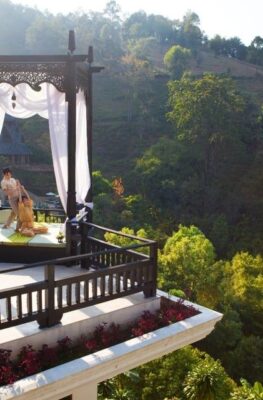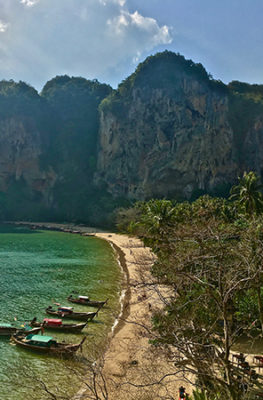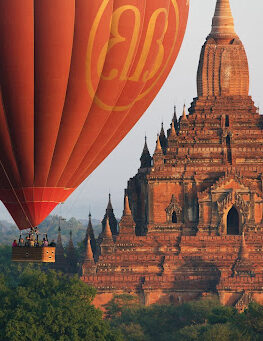Published on March 4, 2016

Singapore Flyer over Marina Bay, Singapore. Image courtesy of Andrew JK Tan/Singapore Tourism Board.
Travelers looking for the biggest and tallest of everything will find several Guinness-worthy sites as they hop around the region.
In Jakarta, Indonesia, Southeast Asia’s largest mosque stands in mute witness to faith of the world’s largest Muslim-majority country. Istiqlal Mosque was designed and constructed in the first few years of Indonesia’s independence: President Sukarno, who ordered its construction, wanted to demonstrate government support of Islam that could also coexist with other faiths (the Catholic Gereja Katedral Jakarta stands practically next door; the mosque’s designer was a Christian himself).
At peak capacity, Istiqlal Mosque‘s main hall accommodates up to 16,000 worshippers, with an additional 60,000 in the five levels surrounding the hall. Sitting above all this is a massive 86-ton dome supported by twelve stout concrete pillars. Verses from the Koran line the dome’s inner rim; far below it, devotees walk on a large red carpet donated by the Saudi Arabian government.
Finally, a 300-foot-high minaret looms outside, broadcasting the muezzin’s call to prayer to the rest of Central Jakarta, while providing a visual counterpoint against the National Monument (Monas) standing in the near distance.

Istiqlal Mosque behind the Jakarta Cathedral. Image courtesy of the Indonesia Ministry of Tourism.
In Kuala Lumpur, Malaysia, the 452-metre-high twin Petronas Twin Towers dominates the Kuala Lumpur Convention Centre (KLCC) district, a symbol of the nation’s ambition and sense of purpose. The Twin Towers were purposely built to be the tallest in the world – a record it held from 1996 to 2004!
While it’s no longer the world’s tallest building, Petronas Twin Towers remains a symbol of Kuala Lumpur as much as Lady Liberty is a symbol of New York. The towers’ design combines both Western and local touches: the eight-point star, used constantly in Islamic art, serves as the basis of the towers’ floor plan. The towers are sheathed in 55,000 glass panels, permitting panoramic views on all levels.
Petronas Twin Towers tours can be booked online at the official ticketing site: visitors ride double-decker elevators up to the Skybridge at Level 41 and then up to the Observation Deck on Level 86.

A close up view of a family in the Singapore Flyer capsule looking at the city skyline of Singapore. Image courtesy of Singapore Tourism Board.
The Singapore Flyer, like the Petronas Towers, was built with world records and symbolic effect in mind: at its completion in 2008, the Flyer became the world’s largest observation wheel (a record it held until 2014); simultaneously becoming a symbol of Singapore’s revitalized Marina Bay district (alongside the equally iconic Marina Bay Sands building).
The 165-metre-high Flyer uses 28 bus-sized air-conditioned capsules to carry visitors on a vibration-free 30-minute ride that offers magnificent views of Marina Bay and the rest of Singapore. On clear days, both neighboring countries Malaysia and Indonesia can be seen from the Flyer!
After the stately flight above Singapore comes to a halt, you can explore the Flyer’s other attractions, housed in the three-storey platform that serves as the wheel’s base. As befits Singapore’s foodie obsessions, two of the Flyer’s key stops flog great street food and heady spirits, via the 1960s-themed Singapore Food Trail and the cozy Flyer Lounge bar respectively.

Hkakabo Razi’s peak in Myanmar. Image courtesy of the Myanmar Ministry of Hotels & Tourism.
In Myanmar’s Kachin State, travelers use the city of Putao as a stepping stone to Southeast Asia’s tallest mountain: a spur of the Himalayas known as Hkakabo Razi, standing at a height of 5,881 metres.
At the moment, summiting Hkakabo Razi is impractical for tourists (for one thing, a one-way trip from the basecamp to the summit takes longer than the one-month visa generally allowed for foreign visitors). Treks to the basecamp from Putao are more practicable: you’ll be hiking through changing vegetations – from subtropical to alpine – till you reach Rasansan base camp with its gorgeous full view of the snow-capped peaks of Hkakabo Razi.
From Putao you can embark on many other adventures, including Lisu and Rawang hill tribe villages; overnight rafting at the Ayeyarwady River’s headwaters north of Putao; and shopping at the Myoma Market.
Southeast Asia’s longest river snakes through five countries in Southeast Asia: the Mekong River‘s headwaters in China proceed to carve a 4,300-km-long path through Thailand, Myanmar, Laos, and Cambodia before emptying into the sea via Vietnam‘s Mekong Delta.
With that much ground to cover, it’s no surprise that travelers will find plenty to do along its banks, all up and down the Mekong’s length.
From Huay Xai near the border between Laos and northern Thailand, travelrs can ride a Luang Say cruise aboard a 34-metre luxury river barge through Laos’ mountainous regions past Pak Ou Caves and the royal enclave of Luang Prabang.
In Cambodia, freshwater dolphin communities can be seen by animal enthusiasts when they visit the town of Koh Pdao, or stop by the small village of Preah Rumkel. Finally, Viet Nam visitors can explore the aquatic villages of the Mekong Delta by boarding a river cruise that promotes close encounters with both the local wildlife and the area’s unique water-based culture (the Cai Rang Floating Market is a must-see).
Son Doong Cave, Viet Nam has been recognized as the world’s largest natural cave. Despite its size, it’s still largely unknown to the outside world: discovered in 1991, the cave’s inner dimensions were only fully explored in 2009 by scientists from the British Cave Research Association.
The expedition uncovered Son Doong Cave’ massive dimensions: at its most expansive, the cave is about 200m high and 200m wide; it’s at least 8.5km long from end to end. Son Doong’s largest stalagmites have reached over 70m in height.
A lush tropical jungle lies within the cave, a “Garden of Eden” nourished by an ample water supply that includes a 2.5km subterranean river with layers of shells agglomerated in the river bed. Close to the Garden of Eden lies a strange, profuse “pearl collection”, tens of thousands of small stone spheres in dry ponds.






